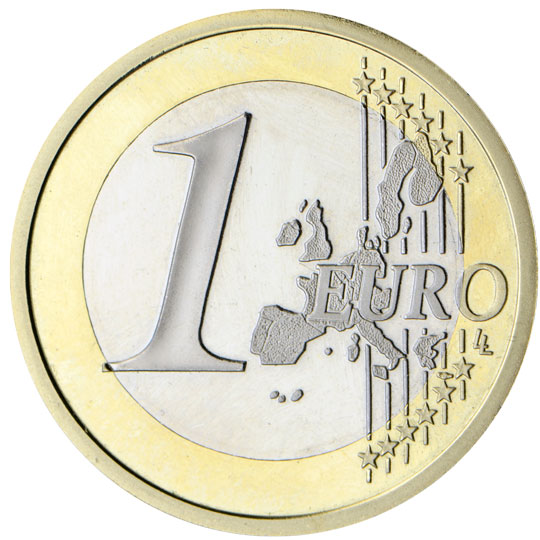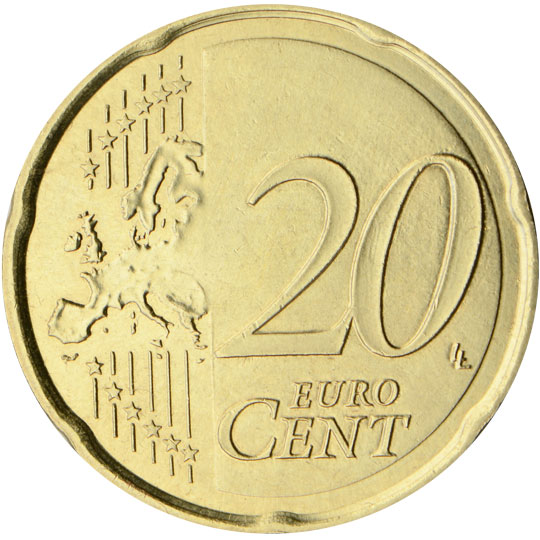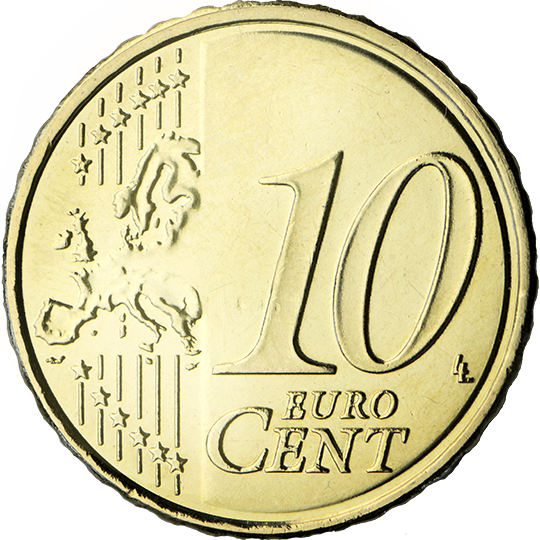Common sides
The common sides of the eight euro coins have different designs:
- €2 and €1, 50, 20 and 10 cent show either the European Union before its enlargement on 1 May 2004 or, as of 1 January 2007, a geographical image of Europe. Coins from Italy (including San Marino and the Vatican City), Austria and Portugal show the more recent design only if they are dated “2008” or later.
- 5, 2 and 1 cent show Europe in relation to Africa and Asia on a globe.


Thickness (mm): 2.20
Weight (g): 8.50
Shape: Round
Colour: Outer part: silver; inner part: gold
Composition: Outer part: copper-nickel; inner part: three layers: nickel brass, nickel, nickel brass
Edge: Edge lettering, fine milled


Thickness (mm): 2.33
Weight (g): 7.50
Shape: Round
Colour: Outer part: gold; inner part: silver
Composition: Outer part: nickel brass; inner part: three layers: copper-nickel, nickel, copper-nickel
Edge: Interrupted milled


Thickness (mm): 2.38
Weight (g): 7.80
Shape: Round
Colour: Gold
Composition: Nordic gold
Edge: Shaped edge with fine scallops


Thickness (mm): 2.14
Weight (g): 5.74
Shape: Spanish flower shape
Colour: Gold
Composition: Nordic gold
Edge: Plain


Thickness (mm): 1.93
Weight (g): 4.10
Shape: Round
Colour: Gold
Composition: Nordic gold
Edge: Shaped edge with fine scallops

Thickness (mm): 1.67
Weight (g): 3.92
Shape: Round
Colour: Copper
Composition: Copper-covered steel
Edge: Smooth

Thickness (mm): 1.67
Weight (g): 3.06
Shape: Round
Colour: Copper
Composition: Copper-covered steel
Edge: Smooth with a groove

Thickness (mm): 1.67
Weight (g): 2.30
Shape: Round
Colour: Copper
Composition: Copper-covered steel
Edge: Smooth


